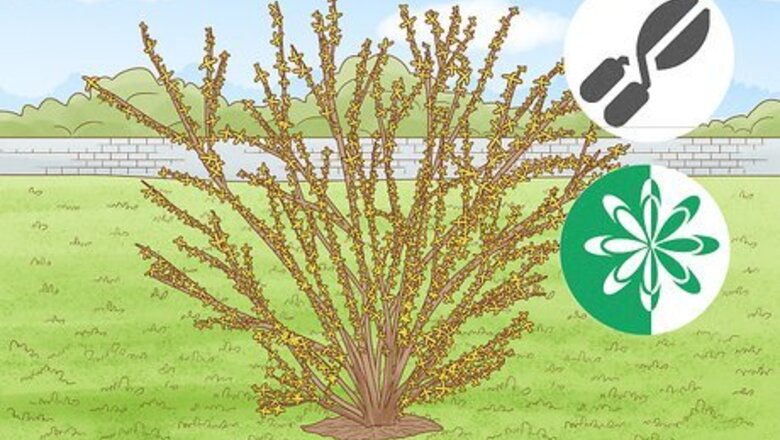
views
Pruning at the Right Time
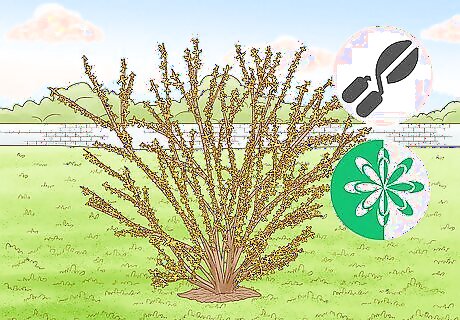
Prune forsythia plants right after they finish blooming in the spring. Wait for your yellow flowers to fade and for the leaves to grow. At this point, the plant starts to develop next year's buds, and the plant carries the buds through the fall and winter season. This is the best time to prune your forsythia.
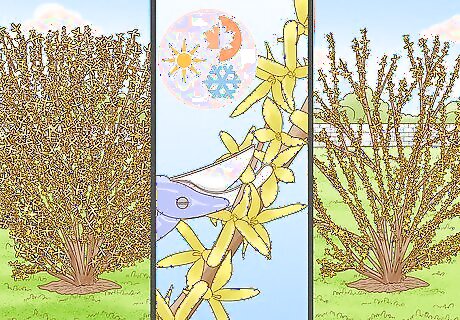
Prune in the summer, fall, or winter to reduce the number of flowers. If you wait to prune your forsythias until after the springtime, the number of flowers that your plant yields next season will be considerably less. This is a good idea if your bush is large and unruly and you want to tame it back. You may sacrifice a season of flowers, but your forsythia bush will look much better the next year.
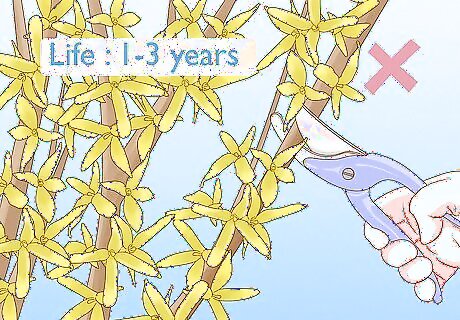
Avoid pruning your forsythia when the plant is 1-3 years old. Young forsythias need little to no pruning. Only when they mature should you prune them once a year. If you want to help maintain the shape of the plant as it grows, you can snip off a few longer stems once a year, though this is not required. Letting the plant take its natural shape helps it establish a healthy root system.
Pruning Mature Forsythias
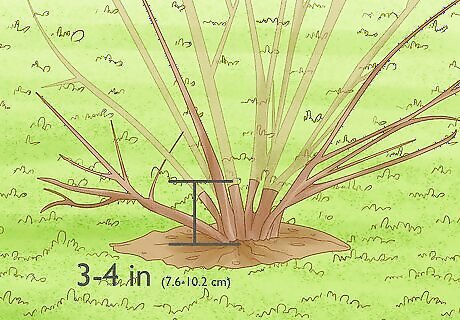
Remove a quarter of the oldest stems by cutting them at ground level. The stems get thicker as they age, and they start to rub against each other towards the inside of the shrub. This can cause disease and infection. To prevent this, use a handsaw to remove some of your old, thick stems. Move your handsaw back and forth quickly to make your cuts. The largest stems have the thickest diameter. The oldest stems typically are also the tallest. By getting rid of them, you reduce the overall height of your shrub. If you can’t reach the very middle of the shrub’s base, cut it to 3–4 in (7.6–10.2 cm) from the ground. Do this after your plants mature to about 5-6 years old. This way, they are large enough to support such a massive pruning.
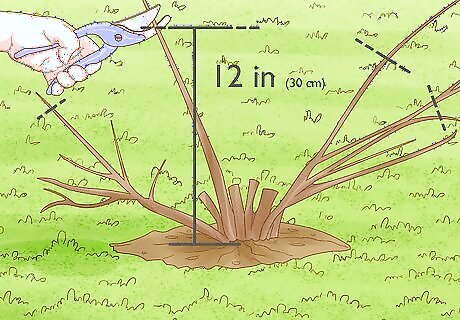
Cut the stems to 12 in (30 cm) or more if you want to encourage growth. Use a pair of loppers or a fine-tooth handsaw to cut your large stems. Instead of cutting them at the ground, leave about 1 ft (0.30 m) of the stem. This way, new stems can grow from the remaining portion of the branch. Trimming the top of the stem off helps reduce the height of your plant while promoting a spot for new shoots to grow.
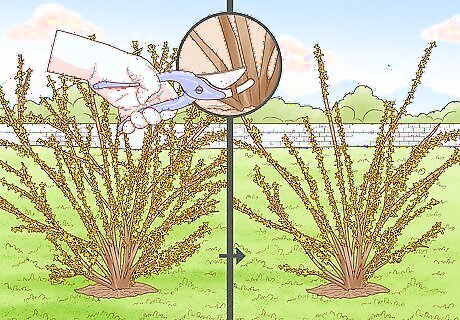
Remove branches low to the ground to maintain the shape of the plant. Sometimes, the forsythia plant grows branches toward the base. This does not look the best, since most of the flowers bloom at the canopy of the plant. To reshape your plant, simply cut off these branches using your pruning shears. Make your cut where the branch first sprouts off the other stem. If you don’t remove low branches, they may start to root to the ground.

Get rid of any dead, bent, or split stems to keep your plant healthy. As perennials grow, they often produce a few dead branches. In addition, the dense stems may start to touch or rub together. If you previously trimmed a stem, new “split stems” may grow where the cut was made. While these instances occur normally as the plant grows, they can take away nutrients and expose the plant to infection. If you notice any stems growing inward rather than outward, these should be pruned as well. Dead, bent, and split stems also change the look of your shrub.
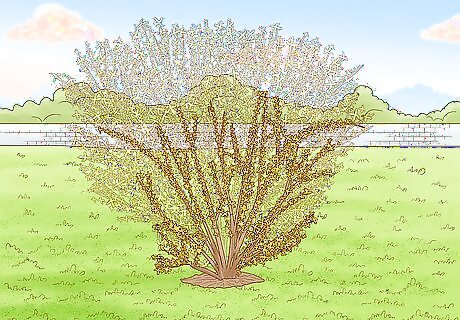
Cut branches back to their point of origin to thin out the canopy. Use pruning shears or loppers to remove any excess branches towards the top of your plant. This helps preserve the natural shape of your forsythia while getting rid of the bulk. Do this for branches that point inward, branches that cross, and branches that are rubbing against other branches. In addition, cut off some of the very tall branches. Removing branches displays the natural shape of the plant. Keeping your forsythia open allows light and air into the middle of the shrub, which helps it grow healthy.
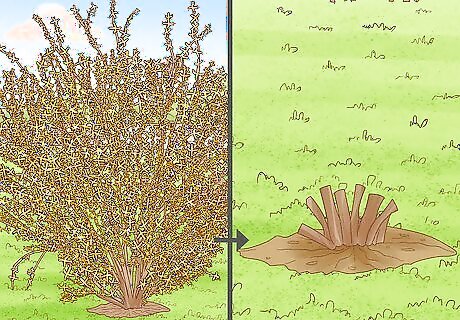
Crop the stems to 4–5 in (10–13 cm) if they are drastically overgrown. Only do this if your plant is an overgrown mess and starts to take over your garden bed. Using loppers, cut all of your stems to the ground. Make your cuts about 4–5 in (10–13 cm) from the ground so new shoots can start to grow. After this, remove excess branches to keep your plant open and airy. For best results, do this in late winter or early spring. Blooming will be reduced or nonexistent after a dramatic pruning. After a few years, your plant will look full again.















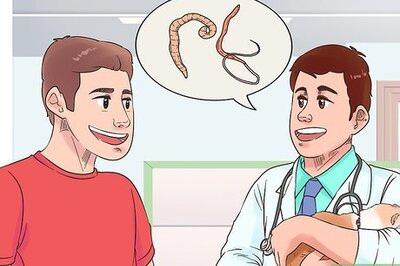



Comments
0 comment